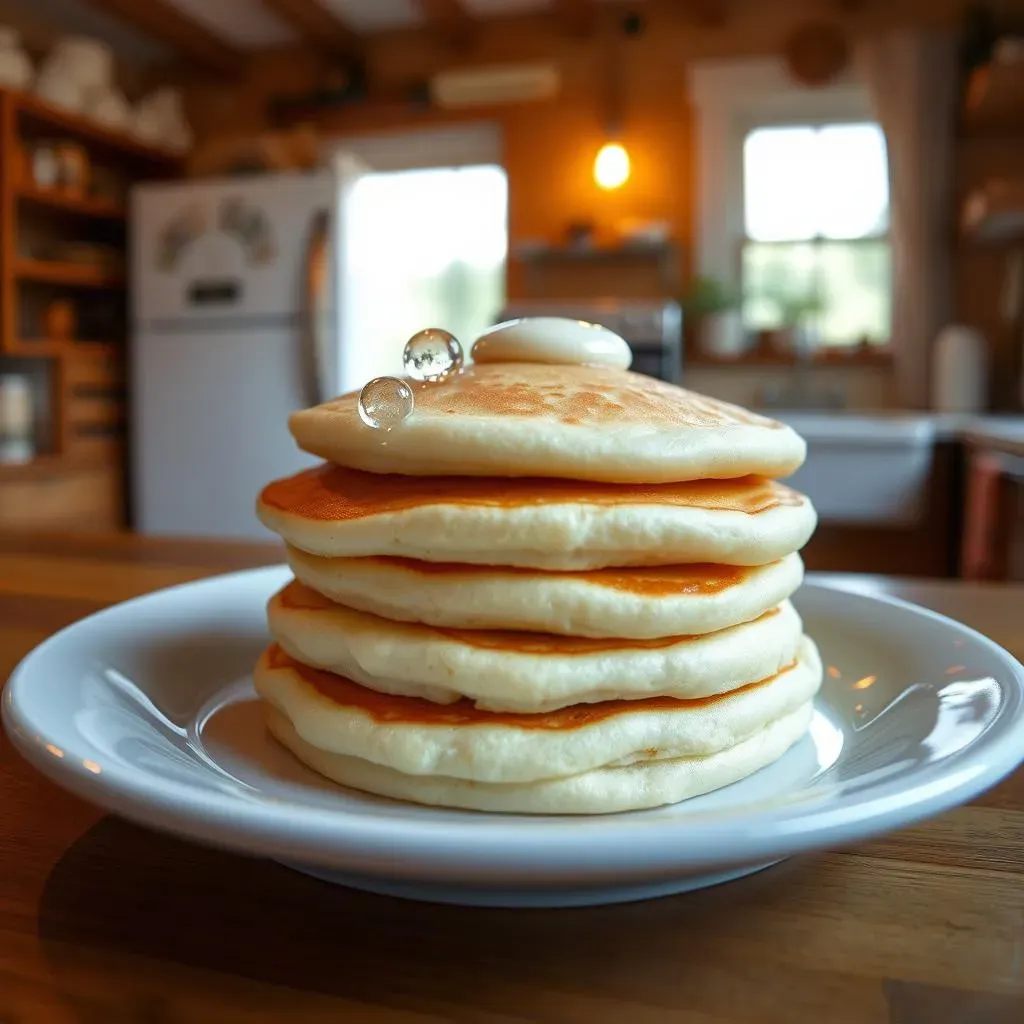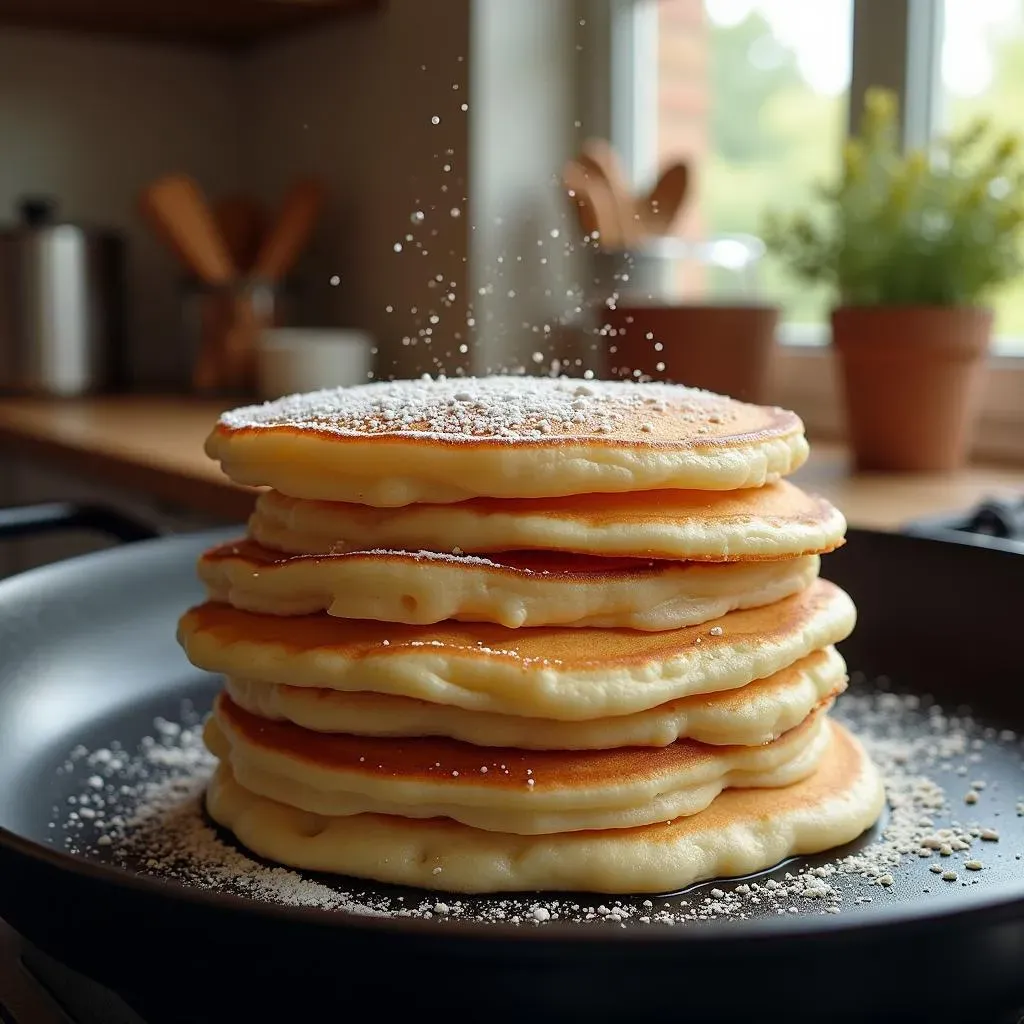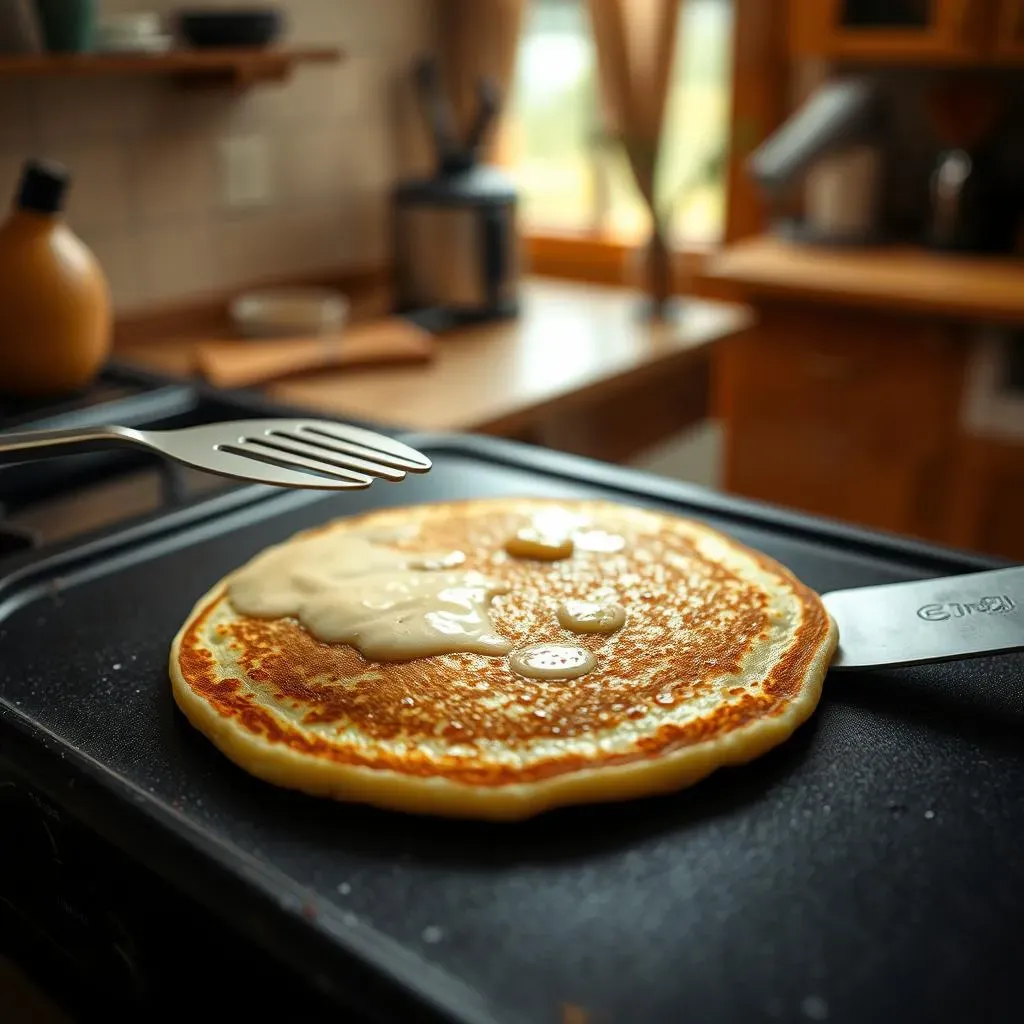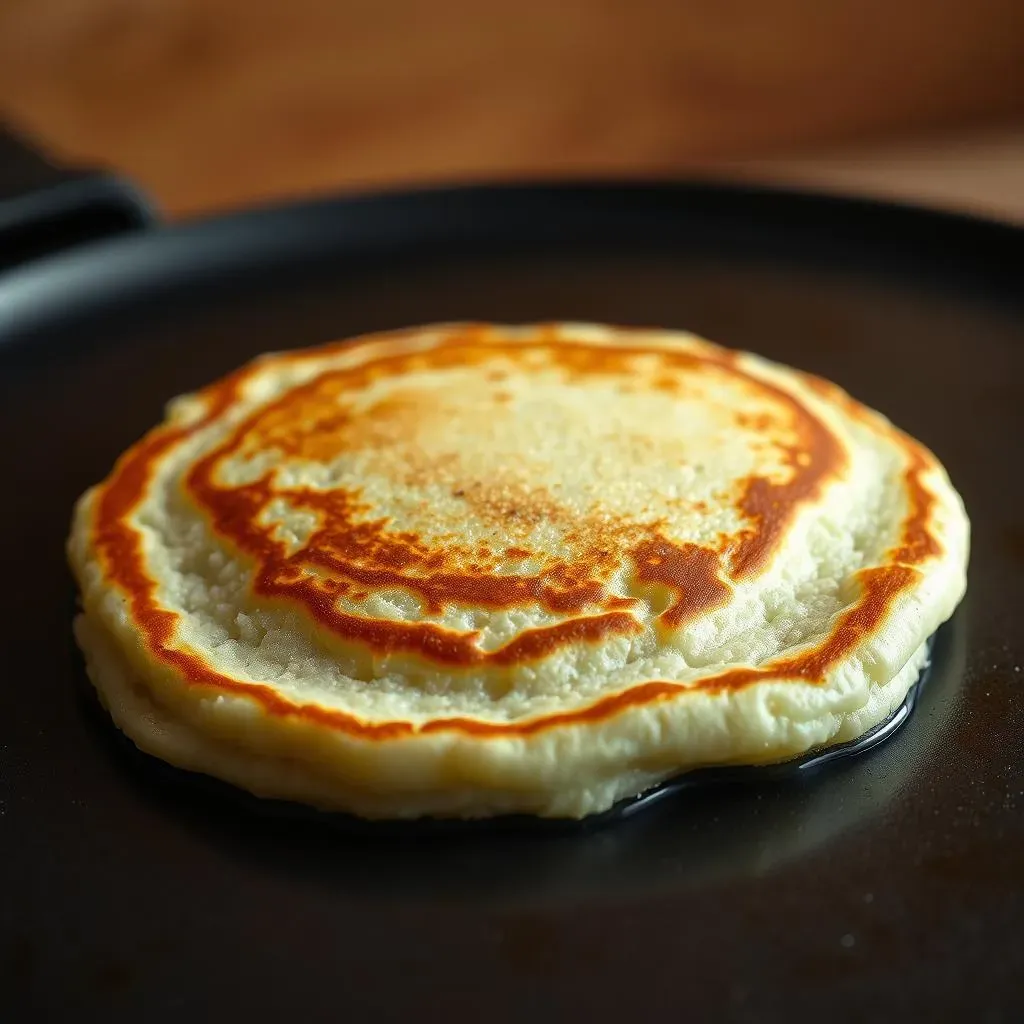Table of Contents
Ever stood over a sizzling pan, spatula in hand, wondering, "are these pancakes done yet?" It's a breakfast battle we've all faced. You want fluffy, golden discs of deliciousness, not a gooey, undercooked mess. Knowing exactly when to flip and when to plate is the key to pancake perfection. This isn't just about cooking; it's about mastering the art of breakfast. We're going to break down the telltale signs that your pancakes are ready for their close-up. Forget the guesswork and say goodbye to sad, soggy centers. This guide will show you how to spot the signals—from the bubbles that surface to the golden-brown edges—that scream, "I'm done!" So, grab your batter, fire up the griddle, and let's get started on the quest to know exactlywhen are pancakes done. We will explore the visual cues, the gentle touch test, and the importance of temperature control, ensuring that every pancake you make is a masterpiece.
The Bubbles Tell the Tale: Knowing When Pancakes Are Done

The Bubbles Tell the Tale: Knowing When Pancakes Are Done
The First Sign: Bubbles Appearing
Alright, let's talk bubbles, they're not just for bubble baths, you know. When you pour that batter onto a hot griddle, it's like a tiny science experiment is happening right before your eyes. You're waiting for something magical, and that magic comes in the form of bubbles. Not just any bubbles, but the ones that pop up and then kind of stay there, forming little craters. These aren’t the tiny, fleeting bubbles you see right away. I'm talking about the ones that stick around, almost like they're saying, "Hey, we're here, and we’re ready for the flip!" It’s like the batter is telling you it’s time to move to the next stage.
The Bubble's Message: Ready to Flip
Think of those bubbles as tiny messengers. They're telling you that the heat is doing its job and the pancake is cooking from the bottom up. The batter is transforming, making those air pockets that give pancakes their fluffy texture. Now, if you see a ton of bubbles that are popping and disappearing quickly, your griddle might be too hot. If you see none, well, you might need to crank up the heat a bit. What you're looking for is a steady stream of bubbles that have popped and left little holes. It's like the pancake is developing its own little map, showing you where it's cooked enough to flip. It's not about perfection, it's about the process.
Bubble Type | Meaning | Action |
|---|---|---|
Tiny, fleeting bubbles | Griddle may be too hot | Lower the heat slightly |
No bubbles | Griddle not hot enough | Increase the heat slightly |
Steady stream of popped bubbles with craters | Pancake is ready to flip | Prepare for the flip |
The Edges Matter Too
While the bubbles are doing their thing, don't forget to glance at the edges of your pancake. These are like the early warning system of when are pancakes done. You'll notice them starting to look a bit dry and set. They'll lose that wet, shiny look of raw batter and begin to appear more matte. This is another sign that the pancake is cooking through and ready for a flip. Think of it like the crust forming on a pie, it's a visual cue that something amazing is happening beneath the surface. So, keep an eye on those edges, they’re just as important as the bubbles when it comes to knowing when to flip your pancake.
Golden Brown and Ready: Visual Cues for Perfectly Cooked Pancakes

Golden Brown and Ready: Visual Cues for Perfectly Cooked Pancakes
The Golden Hue: A Sign of Doneness
so you've got the bubbles and the edges are looking good, now let's talk color. This is where the magic really happens. When your pancakes are cooking, you're not just looking for any color, you're looking for that perfect golden-brown hue. It's like watching a sunrise on your griddle. The bottom of the pancake should start to turn a beautiful shade of gold, not too light, not too dark, but just right. Think of it like toasting bread, you want that even color that indicates it's cooked through and ready to be devoured. This golden color isn't just for looks, it's a sign that the sugars in the batter have caramelized, creating that delicious flavor we all love.
Avoiding the Dark Side: When Brown Becomes Too Much
Now, here's the thing, there's a fine line between golden brown and burnt. If you see your pancake going too dark too quickly, it's time to lower the heat. You don't want to end up with a bitter, charcoal-like pancake. The goal is to achieve that even, golden color that indicates the pancake is cooked through without being burned. It's like finding the perfect tan, you want that healthy glow, not a sunburn. Keep an eye on it, adjust the heat as needed, and don't be afraid to pull it off the griddle if it's getting too dark too fast. Remember, it's better to have a slightly lighter pancake than one that's burnt to a crisp.
Color | Meaning | Action |
|---|---|---|
Pale | Not cooked enough | Cook longer |
Golden brown | Perfectly cooked | Flip or remove from griddle |
Dark brown/burnt | Overcooked | Lower heat, remove from griddle |
The Gentle Touch Test: How to Tell When Pancakes Are Done

The Gentle Touch Test: How to Tell When Pancakes Are Done
The Springy Surface: A Sign of Readiness
so you've seen the bubbles, admired the golden hue, but now it's time for a little hands-on action. I'm talking about the gentle touch test. This isn't about poking your pancake like it’s a science experiment; it’s more about a light, careful touch. When your pancake is nearly done, the surface will start to feel a bit springy, almost like a sponge. It’s not going to be soft and mushy like raw batter, or hard like a hockey puck. It's going to have a gentle give when you lightly press it with your finger or spatula. It’s like the pancake is saying, "I'm cooked through, but I still have some life in me."
The Spatula Test: Gently Does It
Now, if you're not comfortable touching your pancake with your finger, the spatula can be your best friend here. Gently slide the spatula under the edge of the pancake and lift it slightly. If it feels firm and not flimsy, that's another sign that it's ready to flip. It shouldn’t be sticking to the griddle, and it should hold its shape without flopping over. This test is all about feeling the pancake's texture. It's like checking the ripeness of a fruit; you're looking for that perfect balance of firmness and tenderness. This step will help you avoid the dreaded pancake flop, ensuring a smooth flip and evenly cooked results. Don't be afraid to use your spatula to check for that springy texture.
Texture | Meaning | Action |
|---|---|---|
Soft and mushy | Undercooked | Cook longer |
Springy, sponge-like | Ready to flip | Prepare for the flip |
Hard and stiff | Overcooked | Remove from heat |
Pancake Temperature Control: Tips for Evenly Cooked Pancakes

Pancake Temperature Control: Tips for Evenly Cooked Pancakes
The Goldilocks Zone: Finding the Right Heat
so you've got your batter ready, your griddle is preheated, but hold up a sec, are you sure the temperature is just right? It's not about blasting the heat and hoping for the best. It's about finding that sweet spot, the Goldilocks zone, where your pancakes cook evenly without burning on the outside and staying raw in the middle. Too high, and you'll end up with a charred exterior and a gooey interior. Too low, and you'll be waiting forever for them to cook, resulting in a flat, sad pancake. It's about patience, my friend. It's like creating the perfect bathwater; not too hot, not too cold, but just right for a relaxing soak.
Low and Slow: The Secret to Even Cooking
You might think high heat is the key to speed, but when it comes to pancakes, low and slow is the way to go. A medium-low heat setting allows the pancake to cook through gently, giving the center time to set without the outside getting too dark. This ensures that every part of the pancake cooks at the same rate, giving you that even, fluffy texture. It's like letting a good stew simmer, the flavors meld together and everything cooks to perfection. Don't rush the process; patience is key to achieving that perfect pancake. Remember, it's better to wait a little longer for a well-cooked pancake than to have a raw center.
Heat Level | Result | Recommendation |
|---|---|---|
High | Burnt exterior, raw interior | Lower the heat immediately |
Low | Slow cooking, flat pancake | Increase the heat slightly |
Medium-Low | Evenly cooked, fluffy pancake | Maintain this heat level |
The Griddle Test: Ensuring Even Heat
Before you even think about pouring batter, it's crucial to test your griddle's heat. You can do this by flicking a few drops of water onto the surface. If the water sizzles and evaporates quickly, your griddle is likely too hot. If the water sits there and does nothing, it's not hot enough. What you're looking for is for the water to sizzle gently and dance around a bit before disappearing. This indicates that the griddle is heated evenly and ready for action. It's like checking the temperature of your oven before baking, it ensures that everything cooks evenly and comes out just right. This step can save you from a lot of pancake mishaps, making sure each one is cooked to perfection.
Pancake Mastery: The Final Flip
So, there you have it: the secrets to knowing exactly when your pancakes are done. It's not about luck; it's about learning the language of the batter. From the telltale bubbles to the golden-brown edges and the gentle bounce, each sign is a step closer to pancake perfection. Remember to keep your griddle at the right temperature and don't be afraid to practice. The more pancakes you make, the better you'll become at spotting those "I'm ready" signals. Now, go forth and conquer that stack! With these tips, you will be making breakfast masterpieces in no time, leaving your friends and family wondering how you became such a pancake pro. Happy flipping!